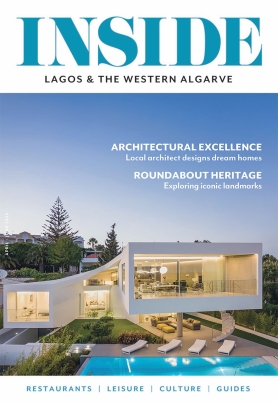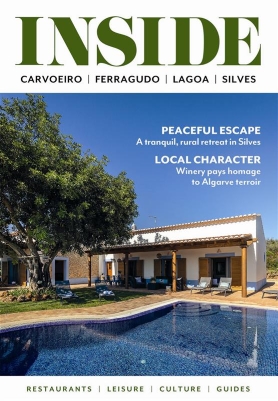INSIDE DISCOVERS THIS UNIQUE DIVING EXPERIENCE JUST OFF THE COAST OF PORTIMÃO
Back in October, press from around the country gathered to witness the sinking of two disused warships almost five kilometres off the coast of Alvor. It may have taken little over two minutes to sink the Oliveira e Carmo corvette and later the Zambeze patrol ship, but it marked the beginning of a very unique project for divers everywhere: the Ocean Revival Project.
Created under Musubmar – Association for the Promotion and Development of Subaquatic Tourism, the idea is the brainchild of Luís Sá Couto, owner of diving company Subnauta, who, in partnership with Portimão Câmara, wanted to create an underwater museum to attract divers from around the world.
The first project of its kind, it took around five years to materialise, but with the support of the Portuguese Navy, who provided the ships in their “last mission at the service of Portugal”, divers have already been able to explore this unique underwater park.
The idea is to create artificial reefs – or rather, the largest single artificial reef structure in the world – to increase the area’s biodiversity, and thus turn the western Algarve into an international diving destination, says Luís Sá Couto. “The park combines the natural desire to unravel the mysteries of the sea and lend sustainability and the ideal conditions for the proliferation of marine biodiversity. It’s also an unparalleled opportunity for the progress of scientific research in the marine biology field.”
The project relies on the sinking of four warships – the remaining two, the frigate Hermenegildo Capelo and the Almeida Carvalho oceanographic vessel, are expected to be sunk on June 15 (if weather conditions allow) and mid-October, respectively – which measure between 45 to more than 100 metres in length and are located at a depth of between 16 and 30 metres. Prior to the sinking, the ships are cleaned and decontaminated, and all pieces that could compromise the safety of the divers are removed. In total, the project is said to have cost around €3million, paid for through funding and sponsorship.
Suited to wreck diving and underwater digital photography, among other specialities, the project also incorporates a display at the Portimão Museum, where visitors can discover the history of the ships and their patrons and commanders. Additionally, part of the project is the donation of a hyperbaric chamber to be installed at the Barlavento Hospital in Portimão, not only to provide a quick and efficient response to potential diving emergencies, but also to serve the local community and the country as a whole.
As for location, divers have always been drawn to the Algarve. It may not have the crystal clear waters of the Red Sea or the Maldives, but the rocky cliffs and natural pools of the coastline, as well as the various shipwrecks off the coast of Sagres, in the west, have remained staple attractions. Selected for its excellent infrastructures, including its many hotels, restaurants, stores and nightlife, alongside its long, sandy beach, attractive marina and countless activities, it is hoped that Praia da Rocha will appeal to both seasoned and aspiring divers, as well as non-diving family and friends. So far, it seems to have paid off. Following the sinking of the first two decommissioned ships, more than 1,000 dives have already been registered during the months of November, December and January. “People feel the enthusiasm and the feeling of ‘flying’ through the ship, reliving its history,” explains Luís Sá Couto. “They are unanimous in saying that it’s one of the best dives and the only one of its kind. By promoting it, it will undoubtedly attract thousands of divers to the Algarve.”
Any trained diver can access the park, although organisers recommend diving with a centre, club or diving school certified by Ocean Revival. Diving operators are also encouraged to get the Ocean Revival certification, obtainable through a course organised by the Musubmar Association. For more information, visit www.oceanrevival.pt













